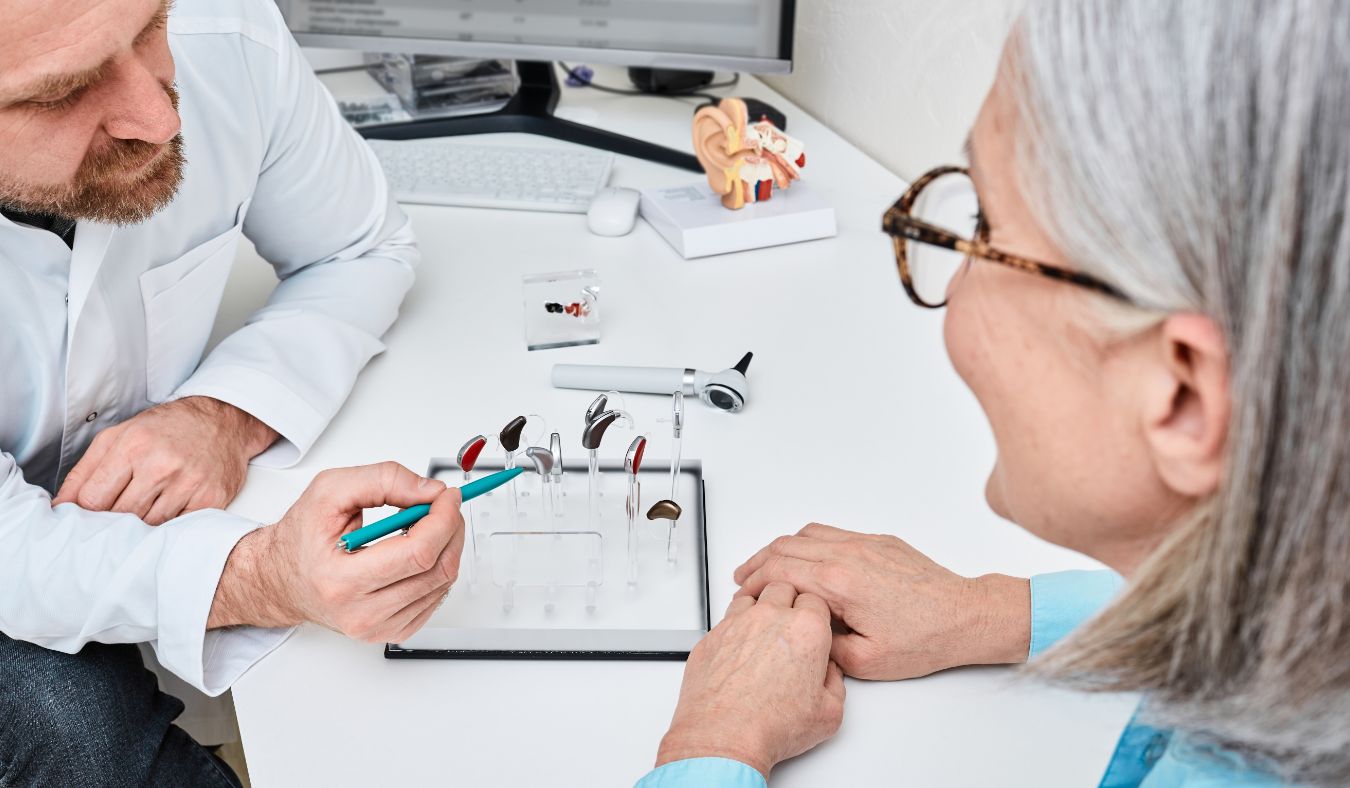Innovations in Hearing Aid Battery Technology
For hearing aid wearers, the reliability of their device throughout the

By: admin | August 28, 2024
Hearing aids do more than amplify sound. They are advanced pieces of technology, designed to enhance your hearing experience in various environments. Whether it’s a quiet conversation at home or a lively social gathering, these devices have a range of settings that can be customized to your unique needs.
Like any new skill, it might take some time and practice, but with patience and guidance from your hearing specialist, you’ll soon be skilled at adjusting your device’s settings. This skill can significantly improve your quality of life as you gain better control over what you hear – and how well you hear it.
Your hearing aids are more than just devices; they’re your key to experiencing the world in full sound. But to make the most of it, understanding the features and functions is vital. Here are some things you should know about your hearing aids:
Personalizing your hearing aid settings is essential for getting the most out of your device and ensuring it suits your specific hearing needs. Hearing aids aren’t one-size-fits-all; they must be adjusted to fit your unique hearing profile and daily life.
Custom settings enhance clarity in different listening environments. For example, adjusting settings for quiet activities like reading or watching TV versus noisy environments like social gatherings can greatly improve your hearing experience. Tailoring these adjustments allows you to hear clearly and comfortably in various situations.
Personalization also addresses specific hearing challenges. If you struggle to understand speech in noisy settings, fine-tuning features like directional microphones and noise reduction can make a significant difference. Adjusting volume and frequency settings helps balance sound and reduce distortion.
In addition, customizing your hearing aids improves comfort and overall satisfaction. Proper adjustments ensure that your hearing aids are tuned to your needs, avoiding discomfort from ill-fitting settings. Regular updates with your hearing care professional help maintain optimal performance as your hearing needs evolve.
Your surroundings play a significant role in your hearing experience. Different environments can influence what you hear and how well you hear it.
For instance, the chatter in a crowded restaurant or the rustling leaves during a peaceful walk in the park can have different impacts on your hearing experience. Recognizing these environmental factors and knowing how to adjust your hearing aid settings accordingly can make all the difference. This knowledge gives you more control over your auditory environment, leading to enhanced communication and an overall better quality of life.
Taking a step further into the world of advanced hearing aid settings, we now focus on two vital features – noise reduction and directionality. These are not just fancy terms; they play a significant role in how well you can hear in different environments.
Noise reduction is a fantastic feature that helps minimize background noise. Imagine being at a busy restaurant or party – with this setting, your hearing aid can reduce the clatter and chatter around you, making it easier to focus on the conversation at hand. On the other hand, directionality allows your hearing aid to concentrate on sounds coming from a specific direction. This is particularly useful during one-on-one conversations or when you want to focus on a particular sound source.
Let’s break down these two features:
In today’s digital age, connectivity is prevalent. This holds true even for your hearing aids. With features like telecoil and Bluetooth, your hearing aids can do more than just enhance your hearing – they can connect you to the world in ways you might not have thought possible! These features are designed to boost your auditory experience by linking your device with various electronic systems, be it your smartphone or public loop systems.
Telecoil functions as a wireless antenna that links to loop systems installed in public places like theaters or churches, delivering clear sound directly to your hearing aid. On the other hand, Bluetooth allows for direct streaming of audio from devices like televisions or smartphones straight into your ears. By understanding and using these features, you can transform how you interact with the world around you.
You might be worried about making a mistake or not being able to remember all the different options. Luckily, there are some simple strategies you can use to make this process easier and more effective.
Firstly, keep in mind that it’s okay to take things slow. You don’t have to learn everything all at once. Start with the basic settings and gradually work your way up as you become more comfortable. Remember, practice is key! The more you use your hearing aid and experiment with the settings, the better you’ll get at making adjustments.
Secondly, don’t hesitate to ask for help from your hearing health professional. They’re there to guide you and answer any questions you may have. They can also provide demonstrations or practical exercises to help reinforce what you’ve learned.
Lastly, consider keeping a journal of your experiences with different settings in various environments. This can be a valuable tool for tracking what works best for you and identifying any patterns or trends.
Sometimes, despite your best efforts to understand and adjust your hearing aid settings, you may still face challenges. This could be in the form of persistent issues with sound quality or difficulty adapting to new settings. In such situations, it’s important to know when it’s time to seek help from a hearing specialist.
A hearing health professional can provide expert guidance and support, helping you overcome these challenges effectively. They can assist with troubleshooting issues, offer advice on optimal settings for different environments and provide practical tips for adapting to new changes. Remember – reaching out for help is not a sign of defeat but a step towards improved hearing health.
Just as you would care for a precious piece of technology, your hearing aids require regular maintenance to provide you with the best possible auditory experience. It’s not just about keeping them clean and safe; it’s also about ensuring they function at their optimal level, day in and day out.
Regular maintenance of your hearing aids is a simple yet crucial task. A well-maintained device can offer clearer sound quality, less feedback noise and even an extended lifespan. Here’s a handy checklist to keep your hearing aids in top-notch condition:
Remember: good care equals great performance!
It’s also important to note that while regular maintenance can keep most issues at bay, sometimes professional help may be needed. If you notice persistent problems like decreased sound quality or frequent feedback noise despite maintaining your device well, it might be time to consult with your hearing health professional. They can identify any underlying issues and provide appropriate solutions.
Ensuring an excellent auditory experience goes beyond just understanding and adjusting your hearing aid settings – it involves taking good care of the device itself! With proper maintenance practices in place, you’re well on your way towards enjoying clearer sounds and better communication every day!
Building confidence in managing your hearing aid’s settings is an empowering process. It’s like learning to drive a car – at first, it might seem complex with all the different controls and indicators, but with time and practice, you become comfortable and confident. The same applies to your hearing aid.
That’s where Hear Again America comes in! Our team of specialists is ready to provide you with the support you need every step of the way. Whether you have questions or simply want to schedule an appointment to learn more about your device’s capabilities, give us a call at (877) 905-9493 for our 31 locations across America.

For hearing aid wearers, the reliability of their device throughout the
By: admin | October 20, 2025

As we get older, we often focus on staying physically fit, eating well and
By: admin | July 29, 2025

When warmer weather arrives, outdoor concerts and festivals become some of
By: admin | June 20, 2025